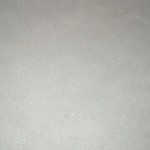 We’re all familiar with the three R’s (reduce, reuse, recycle) and I’d like to think most make a conscious effort to use those three R’s, yours truly included. But, sometimes I fall back into what’s comfortable or easy-to-use. Last week I was at our farmers’ market and I saw a couple of vendors selling beeswax wraps. I’ve seen them before in a retail shop where I purchased my first set of wraps. I was intrigued by what I saw at the market as I had previously thought it was something I couldn’t make at home. Or could I? After doing some research on the internet and purchased cotton prints, I felt confident that I was ready.
We’re all familiar with the three R’s (reduce, reuse, recycle) and I’d like to think most make a conscious effort to use those three R’s, yours truly included. But, sometimes I fall back into what’s comfortable or easy-to-use. Last week I was at our farmers’ market and I saw a couple of vendors selling beeswax wraps. I’ve seen them before in a retail shop where I purchased my first set of wraps. I was intrigued by what I saw at the market as I had previously thought it was something I couldn’t make at home. Or could I? After doing some research on the internet and purchased cotton prints, I felt confident that I was ready.
Beeswax wraps aren’t that difficult to make and it’s a perfect way to reduce the amount of plastic wrap consumed for everyday kitchen use. Wraps retail from $18 with three in a packet. Typical sizing is 8″x8″, 11″x11″ and 14″x14″. When making your own wraps, think of possible uses and decide what sizes will best suit your needs. Most beeswax wraps are good to cover food such as cheese, sandwiches, veggies, fruit (do not use acidic fruits such as limes, lemons, grapefruit as the acid attacks the wax). I’ve read that some use it to cover bread.
Once you start using the wraps, other uses will come into play. I found it a bit strange at first and Mr. S said it feels weird, but I like the idea. Beeswax is known for its antibacterial properties. To help transition from plastic wrap and its clingy effect, spend a couple of seconds pressing your hands into the beeswax wrap. The heat from your hands helps to mold the wax thus allowing it to stay in place.
You Will Need
100% cotton fabric, cut in sizes and shapes (circles are good for tops on bowls or glass jars)
beeswax (either whole or pellet size)
parchment paper
baking tray
pinking shears (to stop edges of fabric from fraying)
 Preheat oven to 290f. Cut fabric into different sizes and shapes using pinking shears. Cut circles if you want to use as covers for mixing bowls. Line a baking tray with parchment paper and place cotton fabric on top. If using a block of beeswax, as I did, use a box grater.
Preheat oven to 290f. Cut fabric into different sizes and shapes using pinking shears. Cut circles if you want to use as covers for mixing bowls. Line a baking tray with parchment paper and place cotton fabric on top. If using a block of beeswax, as I did, use a box grater. Spread grated beeswax over the entire piece of fabric. Place in oven. The wax will begin to melt and after two minutes all the wax should be melted (if not, leave in for another minute). Remove from oven and quickly lift up the corners. Gently wave fabric until it becomes stiff – this should only take a few seconds. If you find there are patches of wax, don’t fret. Get a new piece of parchment paper and place back down on baking tray. Move to oven and allow the wax to melt again. Remove from oven repeating the same steps as above. This time any excess should be on the parchment paper.
Spread grated beeswax over the entire piece of fabric. Place in oven. The wax will begin to melt and after two minutes all the wax should be melted (if not, leave in for another minute). Remove from oven and quickly lift up the corners. Gently wave fabric until it becomes stiff – this should only take a few seconds. If you find there are patches of wax, don’t fret. Get a new piece of parchment paper and place back down on baking tray. Move to oven and allow the wax to melt again. Remove from oven repeating the same steps as above. This time any excess should be on the parchment paper.
To care for beeswax wraps, simply wipe down with a damp cloth or wash with a bit of dish soap in cool or lukewarm water, not hot otherwise you’ll wash any of the wax out of the wrap.


Have fun and make a pouch to hold snacks or a sandwich. Sew 2 buttons on, then attach kitchen twine.

Fold top and bottom, then fold over sides with buttons. Use kitchen twine to attach to make a parcel.

How cute is this snack pack?
The Culinary Chase’s Note: Do not use beeswax wraps on raw meat or fish. If after a few uses you see cracks (folding marks) in the wrap, lay flat out on a baking tray and take a hair dryer to help make the wax more pliable. OR, place wrap between two sheets of parchment paper and iron it (medium heat setting, no steam) for 5 seconds. Remove and allow to cool. Wraps can last up to one year depending on use. Enjoy!



